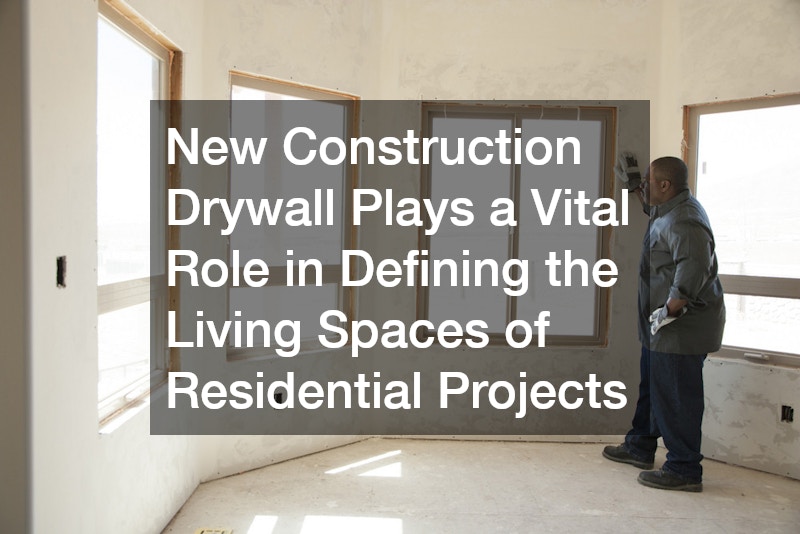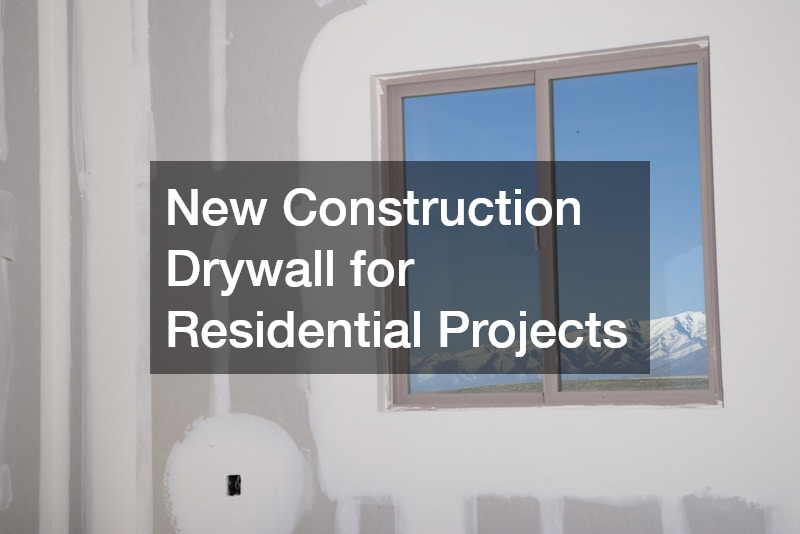When constructing a new residential building, one key element that contributes significantly to the interior aesthetics and functionality is the drywall. Used extensively in the interior finishing process, new construction drywall acts as the canvass for homeowners to express their style, while also providing essential structural benefits. In this article, we will explore the important considerations and benefits associated with selecting and installing drywall in new residential projects.
The Importance of Drywall in New Construction
New construction drywall serves as a critical component in creating smooth, clean wall surfaces that are ready for painting or other decorative finishes. This type of wallboard is designed to be durable, resistant to damage, and easy to install, making it a popular choice for builders and contractors. Additionally, drywall contributes to soundproofing and enhancing the overall thermal insulation of a home, creating a more comfortable living environment suitable for modern residential needs.
Proper installation of new construction drywall is important to ensure the longevity and quality of the wall surfaces in a new home. By employing skilled technicians and using high-quality materials, builders can minimize issues such as cracks, warping, or visible seams. This attention to detail not only improves the immediate appearance of the home but also reduces maintenance and repair costs over time, augmenting the value and appeal of the property.
Choosing the right drywall can enhance specific features of the home, like moisture resistance in bathrooms and kitchens. Specialty drywall options, like fire-rated or soundproof varieties, provide additional benefits tailored to homeowners’ specific desires and requirements. Utilizing new construction drywall appropriately contributes significantly to creating a functional, durable, and aesthetically pleasing residence.
Selecting the Right Type of Drywall
There is a range of drywall types available for use in new construction projects, each designed to address different needs and challenges. Traditional drywall, also called gypsum board, is suitable for most areas within a residential project, providing a reliable and smooth surface at a cost-effective price. For areas prone to moisture, like kitchens, bathrooms, or basements, water-resistant drywall, commonly known as green board, offers better protection against mold and water damage.
Fire-resistant drywall is another option commonly used in residential construction to enhance occupant safety. This type usually includes additional fire-retardant materials, making it thicker and heavier but offering crucial protection in case of a fire emergency. Homeowners often appreciate the added safety and peace of mind, knowing that their investment is protected by these well-regarded fire-prevention measures.
Soundproof drywall introduces another dimension of comfort, reducing noise transmission between rooms or from the outside. Particularly in urban situations or multi-dwelling developments, this can be an essential feature for enhancing privacy and living quality. By carefully selecting the type of new construction drywall, builders can ensure that each home is specifically tailored to meet the expectations and lifestyles of its future occupants.
The Installation Process of New Construction Drywall
Installing new construction drywall is a meticulous process that requires precision and skill to achieve the best results. Initially, measuring and cutting the drywall sheets accurately to fit the designated spaces is crucial for reducing waste and ensuring clean lines and edges. Technicians then secure the boards to the building’s framework with the appropriate fasteners, considering factors like spacing consistency and edge alignment for a seamless finish.
Once the drywall is in place, the joints between sheets are covered with joint tape and joint compound, which are then sanded down to achieve a smooth, even surface. This step must be conducted with care to prevent visible seams or imperfections once the walls are painted or finished. Each layer of compound is applied, dried, and sanded until the desired finish is obtained, demanding a keen eye for detail and craftsmanship.
The final step includes texture application, if desired, and painting, which brings the walls to life and solidifies their role as a blank slate for decoration. Proper care during the installation process ensures that new construction drywall meets not only functional but also aesthetic standards, contributing to the home’s value. This careful balance of function and form is what makes drywall essential in residential construction projects.
New construction drywall plays a vital role in defining the living spaces of residential projects, providing a versatile and functional backdrop for homes of all styles and sizes. From enhancing structural integrity and insulating properties to offering a canvas ready for creative expression, drywall is an indispensable element of modern home building. As homeowners and builders navigate the multitude of options available, prioritizing the right type and quality of drywall will ensure a lasting and valuable investment.
Whether prioritizing moisture resistance, fire safety, or soundproofing, careful selection and expert installation of new construction drywall guarantee homes that are both beautiful and resilient. By understanding the importance and applications of different drywall types, stakeholders in the home building process can make informed decisions that enhance the overall living experience. Ultimately, incorporating new construction drywall thoughtfully and skillfully transforms the blueprint of a residential project into a warm, inviting, and durable home.




